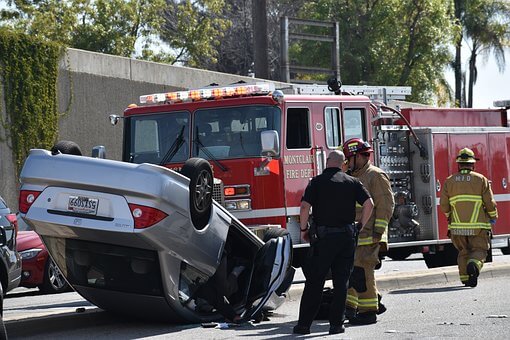Key Points
- Researchers at North Carolina State University have developed a model to improve how quickly first responders reach accident sites.
- The model outperformed existing techniques in computational testing.
- The researchers drew on data collected by the North Carolina Department of Transportation to test the model’s efficiency.
Researchers at North Carolina State University have developed a model to help improve response times for first responders, such as police and EMTs, to reach the scene of vehicle accidents. In computational testing, the model performed better than existing techniques for getting first responders to accident sites quickly.
The goal of the model was to determine the most efficient way to get first responders to an accident site. Researchers aimed to answer questions such as where first responders should be based to respond to the most likely accident sites, whether it is always best for the closest first responders to go to an accident site, or if it would be faster for first responders who are farther away to respond depending on traffic, and how accident severity affects response times.
The model maximizes the coverage area to respond to as many accident sites as possible while minimizing the amount of time it would take respondents to reach accident sites. The model also takes into account “hot spots,” prioritizing the efficiency of response times to locations where accidents are most likely to happen based on historical data.
The model can be used for both long-term planning and allocating incident response resources on a day-to-day basis. The model helps authorities optimize the location of respondents and determines which respondents are best placed to reach an accident most quickly.
To test the model, the researchers used data collected by the North Carolina Department of Transportation about 10,983 traffic incidents that occurred in 10,672 different locations in Raleigh, N.C. The researchers used the data to test how efficiently the model performed compared to two current state-of-the-art techniques used to allocate incident response resources. The model outperformed the existing techniques in improving response times, regardless of the size of the traffic problem they were responding to.
The researchers made the model flexible enough to incorporate changes in the number of resources available for incident response. They are now testing the limits of the model and are looking for partners to conduct pilot studies with their model.
“Our model outperformed the existing models in terms of improving response times, and now we want to see what we can do to make it even better,” said Leila Hajibabai, corresponding author of the paper and an assistant professor in NC State’s Edward P. Fitts Department of Industrial and Systems Engineering.
The paper, “Joint Column Generation and Lagrangian Relaxation Technique for Incident Respondent Location and Allocation,” is published open access in the journal Computer-Aided Civil and Infrastructure Engineering.
If our reporting has informed or inspired you, please consider making a donation. Every contribution, no matter the size, empowers us to continue delivering accurate, engaging, and trustworthy science and medical news. Independent journalism requires time, effort, and resources—your support ensures we can keep uncovering the stories that matter most to you.
Join us in making knowledge accessible and impactful. Thank you for standing with us!

